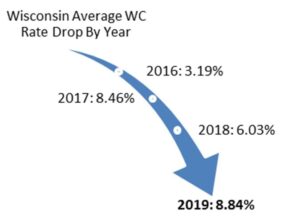S&P 500 Hits All-Time High on Soft-Landing Hopes

Wall Street traders betting the Federal Reserve will be able to engineer a soft landing spurred a rally in riskier corners of the market, with stocks hitting all-time highs.
The S&P 500 climbed 1.7% — notching its 39th record in 2024 — and extending this year’s surge to about 20%. Tech led gains, while defensive industries underperformed. The Nasdaq 100 added 2.6% and the Russell 2000 of small caps rose for a seventh straight session. Bitcoin jumped 5%. Treasuries were mixed, with shorter-maturities outperforming longer ones. The dollar fell.
The Fed’s bold start to cutting interest rates and its determination not to fall behind the curve re-ignited hopes the central bank will be able to avoid a recession. Data Thursday showing a slide in jobless claims to the lowest since May signaled the labor market remains healthy despite a slowdown in hiring.
“Despite some volatility after the Fed’s rate cut, the S&P 500’s bullish trend remains intact,” said Fawad Razaqzada at City Index and Forex.com. “The Fed’s decision to deliver a 50-basis point rate cut was largely welcomed by investors. The move was seen as a bold but necessary step to ease economic concerns without sending panic signals reminiscent of the 2008 financial crisis.”
The S&P 500 topped 5,700. Wall Street’s favorite volatility gauge — the VIX — sank to around 17. That’s ahead of a quarterly episode known as “triple witching” in which derivatives contracts tied to stocks, index options and futures mature — potentially amplifying market moves. About $5.1 trillion are set to expire Friday, according to an estimate from Asym 500.
The yield on 10-year Treasuries advanced two basis points to 3.72%. The pound rose as the Bank of England held rates steady and said it won’t rush to ease policy. The yen fell ahead of the Bank of Japan policy decision.
Equities tend to respond positively to falling policy rates over the next year if a recession is avoided, according to Keith Lerner at Truist Advisory Services Inc. There have been six rate cutting cycles for the Fed since 1989 and stocks have been up a year later in four of six instances, he noted.
Looking a bit more granularly, US large caps have outperformed small caps in the year following the first rate cut in four of the previous six instances. Small caps outperformed, counterintuitively, into the 2001 and 2008 recessions.
“On a short-term basis, small-cap stocks may see a greater boost from rate cuts given these companies generally have a greater proportion of floating rate debt relative to large caps,” he said. “However, small-cap earnings trends are still lagging, and a cooling economy is historically a headwind for the asset class. Thus, we still prefer large caps longer term.”



